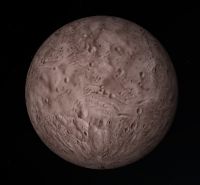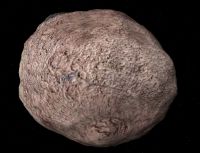Despina
Jump to navigation
Jump to search
Despina (Neptune V, S/1989 N 3) is one of the inner moons of Neptune. It was discovered by Harold J Reitsema et al in September 1989. It is named after Despoina, daughter of Poseidon and Demeter, of Greek mythology.
Despina in Orbiter
Despina was first introduced into Orbiter with the add-on neptune.zip in November 2002.
| Add-on | Source | Version | Author | Type | Release Date | Compatibility | Wiki article |
|---|---|---|---|---|---|---|---|
| Neptune Minor Moons | O-F Resources | 2004-12-14 | Nighthawke | Scenery | 14 December 2004 | ||
| Neptune | AVSIM | Rolf Keibel | Scenery | 7 November 2002 | |||
Despina as seen by Voyager 2 in July 1989,
from Wikimedia Commons
:
| Neptune's natural satellites |
|---|
| Named satellites:
Despina | Galatea | Halimede | Hippocamp | Laomedeia | Larissa | Naiad | Nereid | Neso | Proteus | Psamathe | Sao | Thalassa | Triton Numbered Satellites: |
| See also: Pronunciation key | rings of Neptune |
| edit The Solar System | |
|---|---|
| Central star |
Sun (Sol) |
| Planets |
Mercury - Venus - Earth - Mars - Jupiter - Saturn - Uranus - Neptune |
| Natural satellites |
Moon - Phobos - Deimos - Io - Europa - Ganymede - Titan - more... |
| Add-ons |
Planets - Dwarf Planets - Small objects - Natural satellites - Alternative star systems |
 | This natural satellite related article is a stub. You can help Orbiterwiki by expanding it.
|



